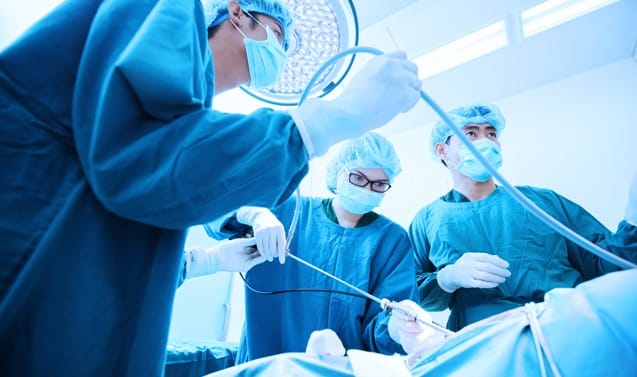
Abdominal Injury During Laparoscopy
Laparoscopy is one of the most common abdominal surgical procedures performed around the world. It is a minimally invasive surgery, which a surgeon performs by making several small incisions, each one about ½” in size, through which surgical instruments are inserted. Minimizing the size of the surgical incision greatly reduces the patient’s post-operative healing time, decreases the patient’s risk of developing a post-operative hernia, and minimizes surgical scars.
Unfortunately, the very small size of the laparoscopic incisions limits the surgeon’s view while entering the patient’s abdomen. This limited view during insertion of sharp surgical instruments can cause serious injury to the patient. If the surgeon is negligent in placing surgical tools too deep into the patient’s abdominal cavity, blood vessels or bowel are damaged and the patient can suffer life-threatening injuries such as internal bleeding (hemorrhage from a lacerated artery or vein) or sepsis (infection spread from a perforated or lacerated small intestine or bowel).
Vascular injury (injury to blood vessels) and bowel injury are the most common injuries suffered by patients having laparoscopic surgery and very often occur just as the abdomen is being entered and before the intended surgical procedure begins. Major injury can occur when the Veress needle (a special needle used inflate the abdomen) or a trocar (a sharply pointed metal tube through which surgical tools are passed in and out of the abdomen) is negligently inserted into an artery, vein, colon, small intestine, ureter or other internal organ.
Additionally, a medical mistake can occur when the weight of a patient is not taken into consideration before surgery. In thinner patients, the distance between the anterior abdominal wall (where there are layers of abdominal muscle and tendons) and the retroperitoneal vascular structures (the major blood vessels located just behind the abdominal wall) is incredibly small. The distance between the abdominal wall and the thin patient’s aorta, iliac artery, and other great vessels may be as little as two centimeters. The distal aorta and right common iliac artery are particularly prone to injury and can be cut or damaged by negligent trocar placement at the beginning of the laparoscopic procedure.
Before laparoscopy is performed on a patient, the patient must be properly evaluated, including a full clinical history and thorough clinical examination. If you would like to discuss your potential claim arising from an injury during laparoscopy, the attorneys at Yost Legal Group are experienced professionals ready to investigate your claim with compassion and determination.
Call The Yost Legal Group today at 1-800-YOST-LAW (967-8529) for a FREE, confidential, no-obligation consultation.
At The Yost Legal Group, you will never pay an attorney’s fee unless we achieve a recovery for you. We don’t get paid until you do